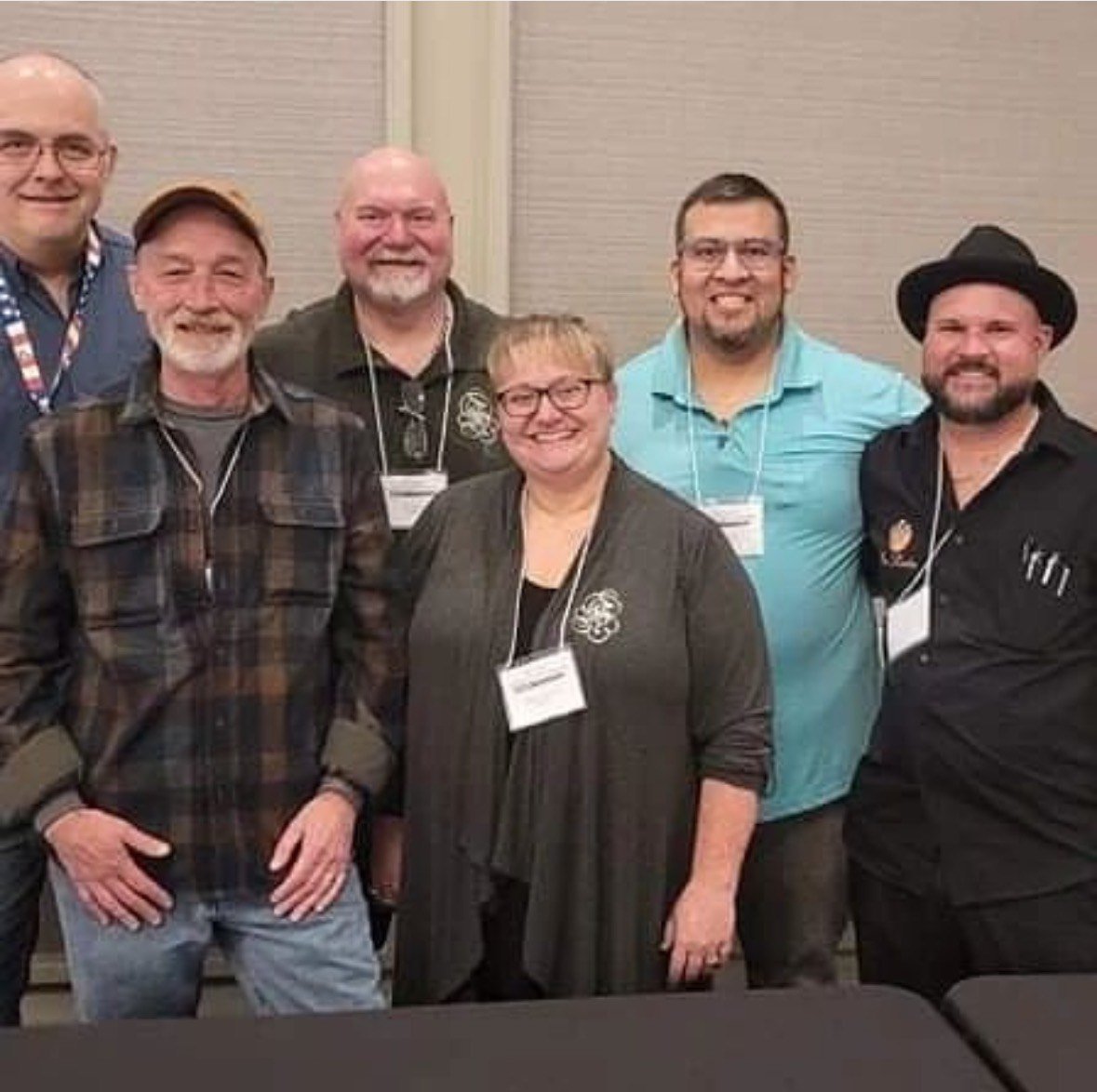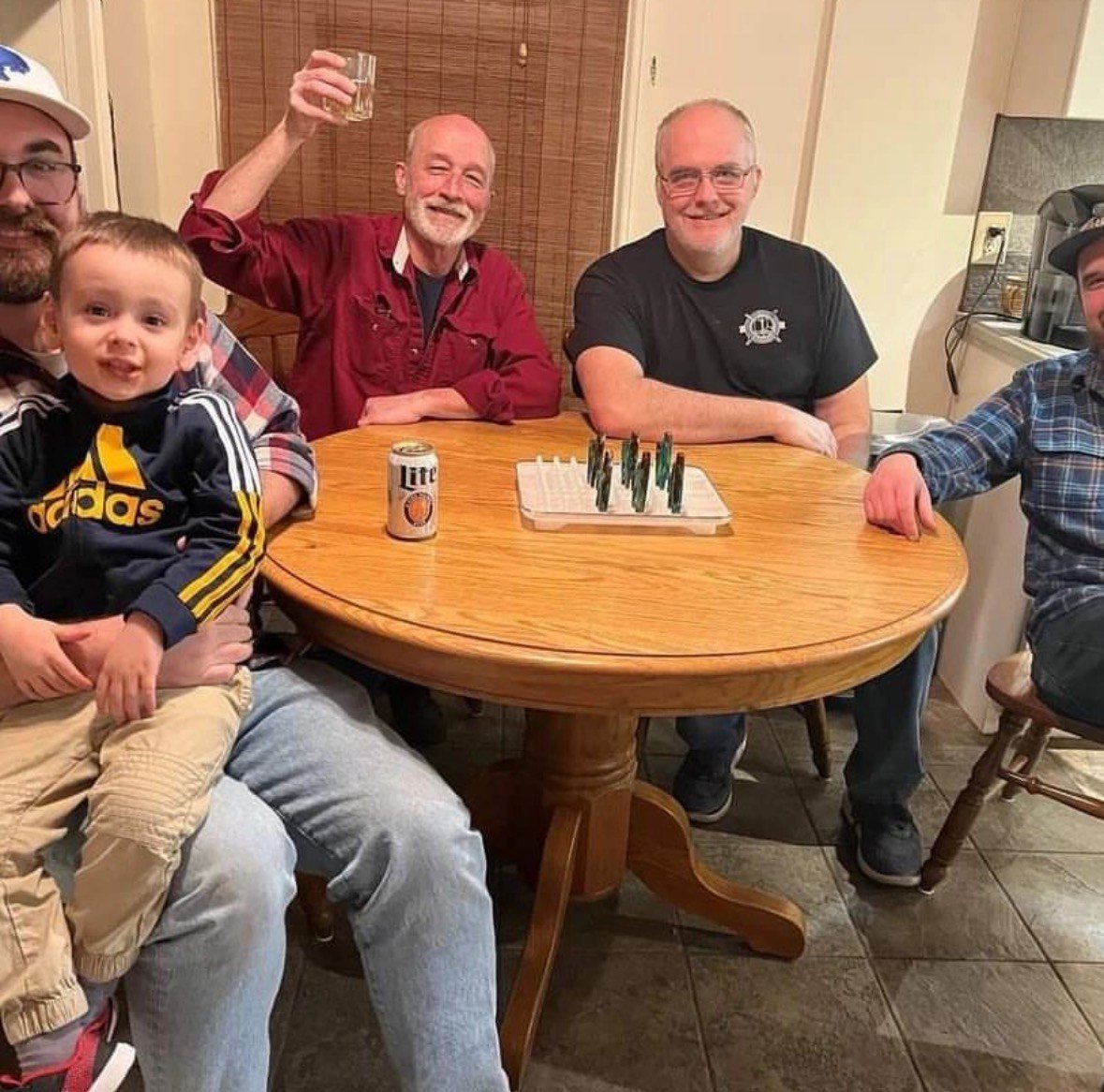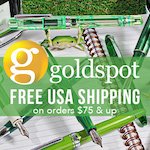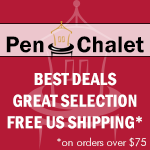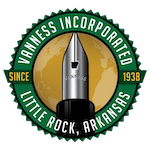(Caroline Foty's first fountain pen was a 1970s Sheaffer No Nonsense that still writes perfectly. Since she discovered pens by independent makers, she wants "one of each, please" and wants to meet all the makers. Maybe you do, too. She lives in Baltimore with pens, cats, and all kinds of fiber arts supplies.)
In early October, Hardy Penwrights announced a post-show-season sale of pens on their web shop. When I placed my order, in the order comments I wrote that I’d been thinking I needed another Hardy pen, and here in my inbox was a sale.
I only mention this because of the email I got back the next day: “Speak of the devil and he shall appear!” It’s an example of the wit for which Greg Hardy was well known.
Hardy passed away unexpectedly on October 26th. We talked about his artistry in the shop, and his sources of inspiration, in the Meet Your Maker series in February 2023. I reached out to his friends in the pen maker community for their stories about him as a colleague and fellow maker.
Greg Hardy, left, and Rich Paul.
Rich Paul (River City Pen Co.) said, “In early 2022 having been laid off the prior year I was struggling with things overall. Greg invited me to his home for a long weekend where he, Tim Crowe, Gavin Hardy (Greg’s son,) and I made pens from the first run of Turnt Pen Co. Allegheny River blanks. We made eight of them with each of us working on specific parts. We all kept one and gave one away over the course of the next year to a young person we hoped to penable or felt inspired by. Spending time with Greg away from shows was quite an experience. Greg loved his family and spoke highly of each one. He glowed with pride. Even more so when they weren’t around. He was a very insightful friend. A deep thinker, a comedian, a family man. And his friends were also his family. And he let that be known not so much in his words. But in his actions. I learned a lot of things that weekend. Both about pens. And about life.”
Back (L to R): Rich Paul, Jim Hinze, Jon Tello, Kirk Speer. Front (L to R): Greg Hardy, Elyse Longazelle.
Rich also included a pair of photos from a pen show that show Hardy’s sense of humor. In the first shot, you see Rich, Greg, Jim Hinze, and Braxton Frankenbery apparently just standing around together. In the second shot, you see how the first one was made.
L to R: Rich Paul, Greg Hardy, Jim Hinze, Braxton Frankenberry.
Jim Hinze (Hinze Pen Co.) said, apropos of that photo, “He would always call me ‘little buddy.’ He was one of the few people outside of immediate family that could get away with calling me Jimmy. From him it seemed natural. He was one of the kindest people I knew. He was ALWAYS willing to help anyone in the pen world whether it be a maker, a collector, an aspiring pen addict.” His way of helping me at a pen show was to always know the count of independent makers who were exhibiting there.
Tim Crowe (Turnt Pen Co.) remembered getting his start as a maker through connecting with Greg. “I came across an ad for Hardy Penwrights, a company I’d never heard of, and being interested in the pen, I messaged the maker. A fella named Greg responded and started talking to me as if we’d known each other for years. That night, l got another message from Greg. It turns out that he thought I was my dad (also Tim Crowe). Through that conversation, I found out that he lived right up the road in Scio, NY, and that my dad had student taught in Greg’s classroom. I told my dad about it and he lit up. He had so many hilarious stories from both student teaching and the ten years they worked together afterward.”
“A few months later, I had the idea that I wanted to try my hand at making pens. I posted in a random Facebook pen turning group asking if anyone could point me toward some resources to get started. Within an hour Greg had messaged me and invited me to his shop to teach me. On February 18, 2020, Greg stood next to me for about ten hours and guided me through the entire process, start to finish. He let me use his tools, his materials, and most importantly, his time. I left that night with the very first custom pen I’d made myself, but more importantly, I’d gotten to know the man who would act as my friend and mentor (I’d often call him pensei, my pentor, or Obi Wan Penobi). Every time I had a question, an idea, or needed some guidance, Greg was there. Whenever I ran into a problem, whether with pens or in education, Greg was happy to help. Ultimately, our friendship went way beyond pens. He and his wife Carlene opened their home not just to me, but to my entire family.”
Pierre Miller (Desiderata Pens) said that a couple of years ago at the Chicago pen show, he fell into conversation with Greg about the dish of candy he always kept on his table. It related to his background in education administration and was a tool for communicating with students: “He said even kids who were behaving poorly, if you gave them a piece of candy they’d shut up.” He didn’t say whether or not this was applicable to his pen show customers.
Cheers, my friend.
Greg’s influence on the pen community will be lasting, both in the qualities of his friendship and in the intriguing metalwork that led to his pens receiving multiple nominations in the Pen World Reader’s Choice Awards and one award for Best Metal Mastery. He will be missed by everyone who knew him, and his pens will call him to everyone’s mind whenever they are put to use.


